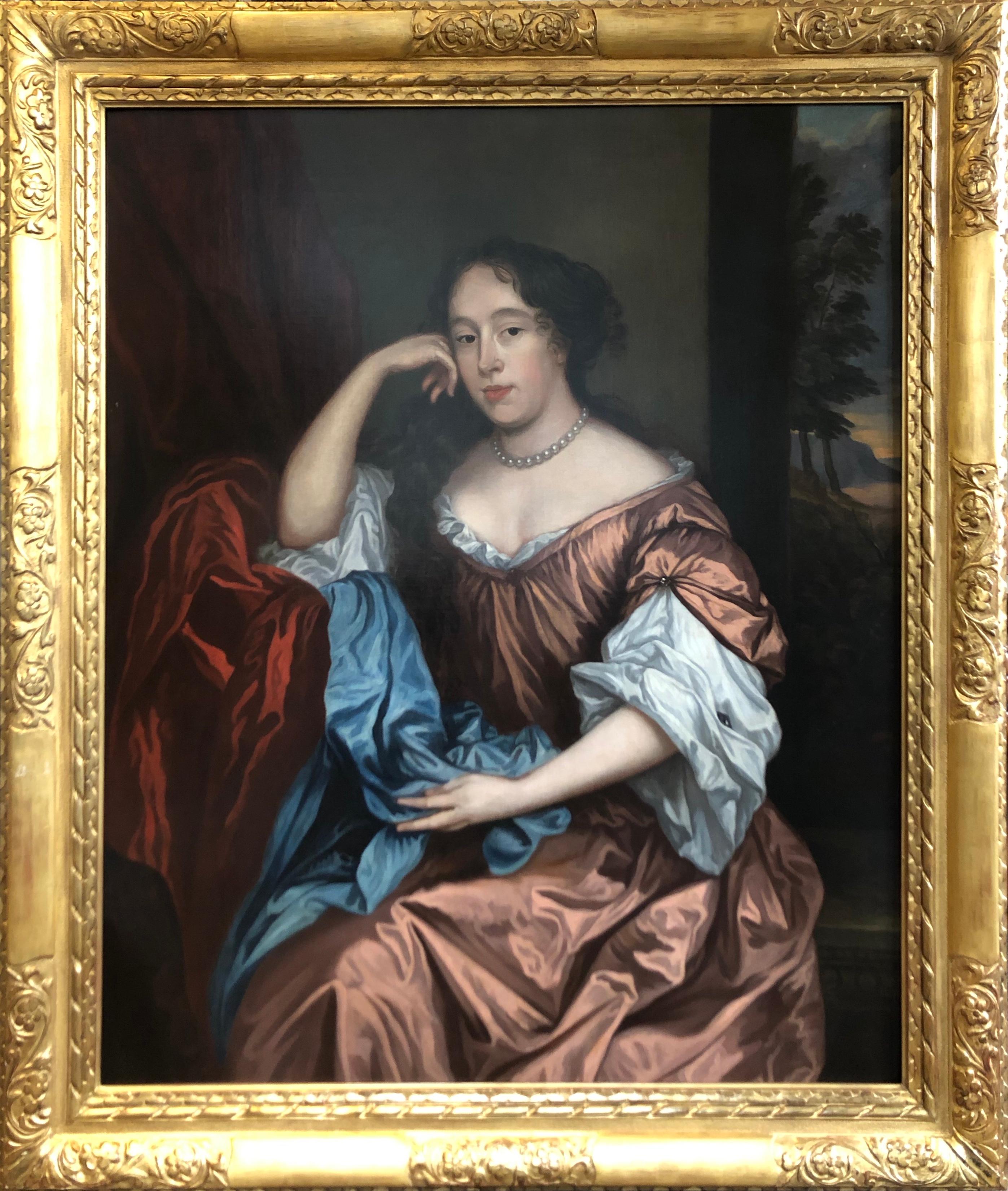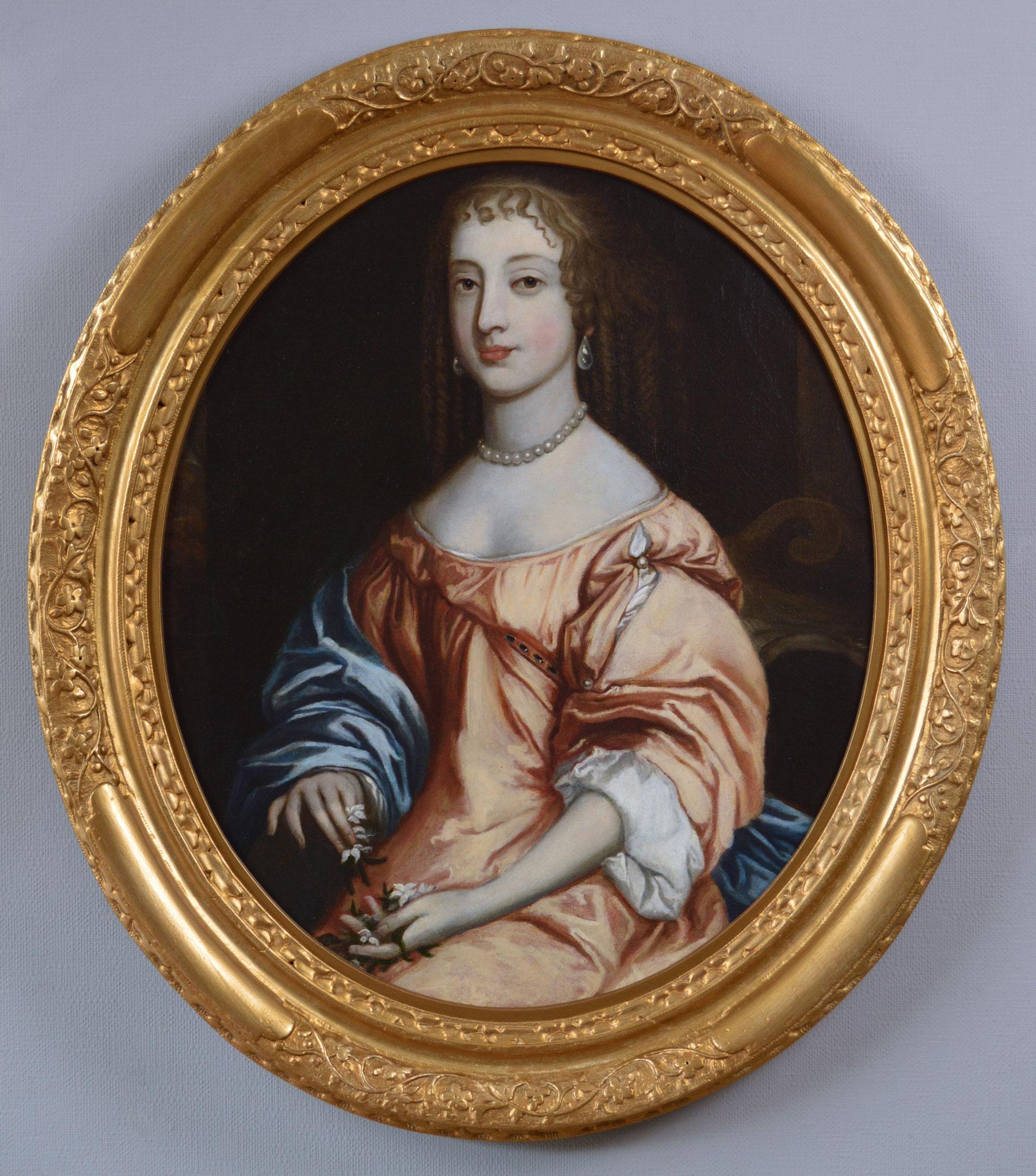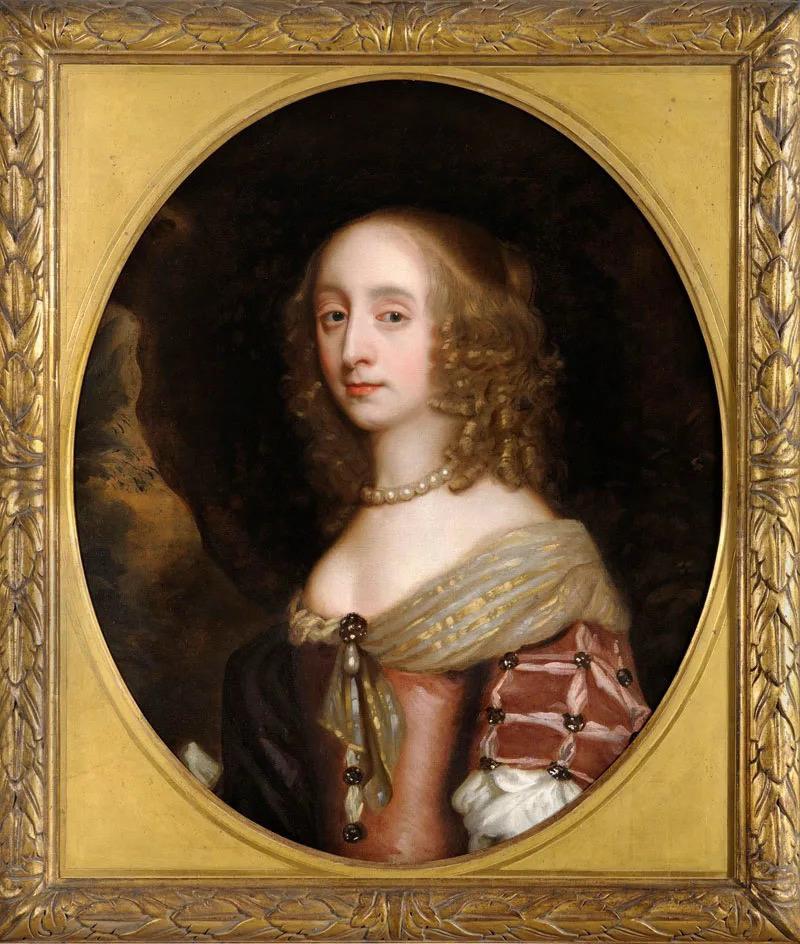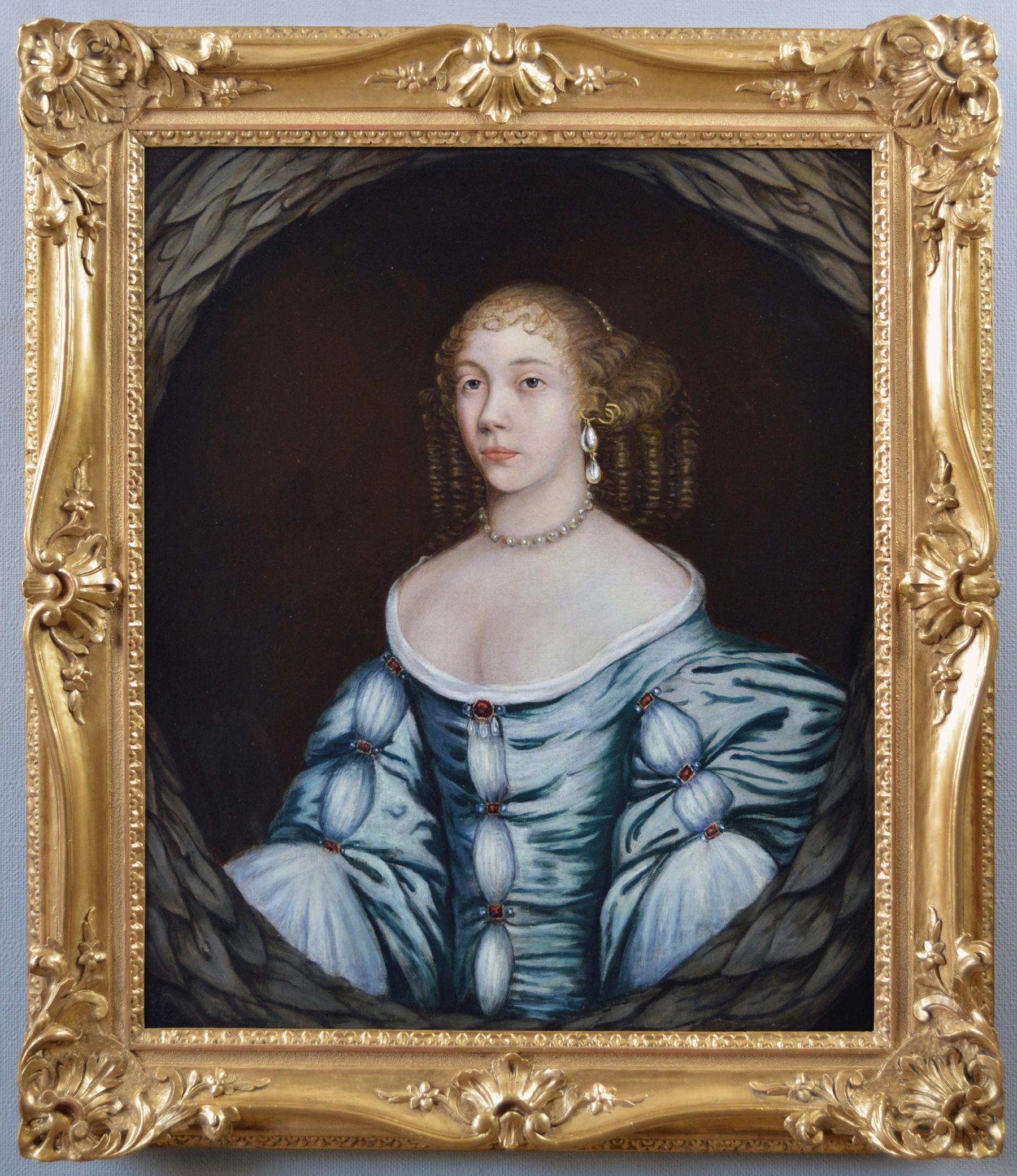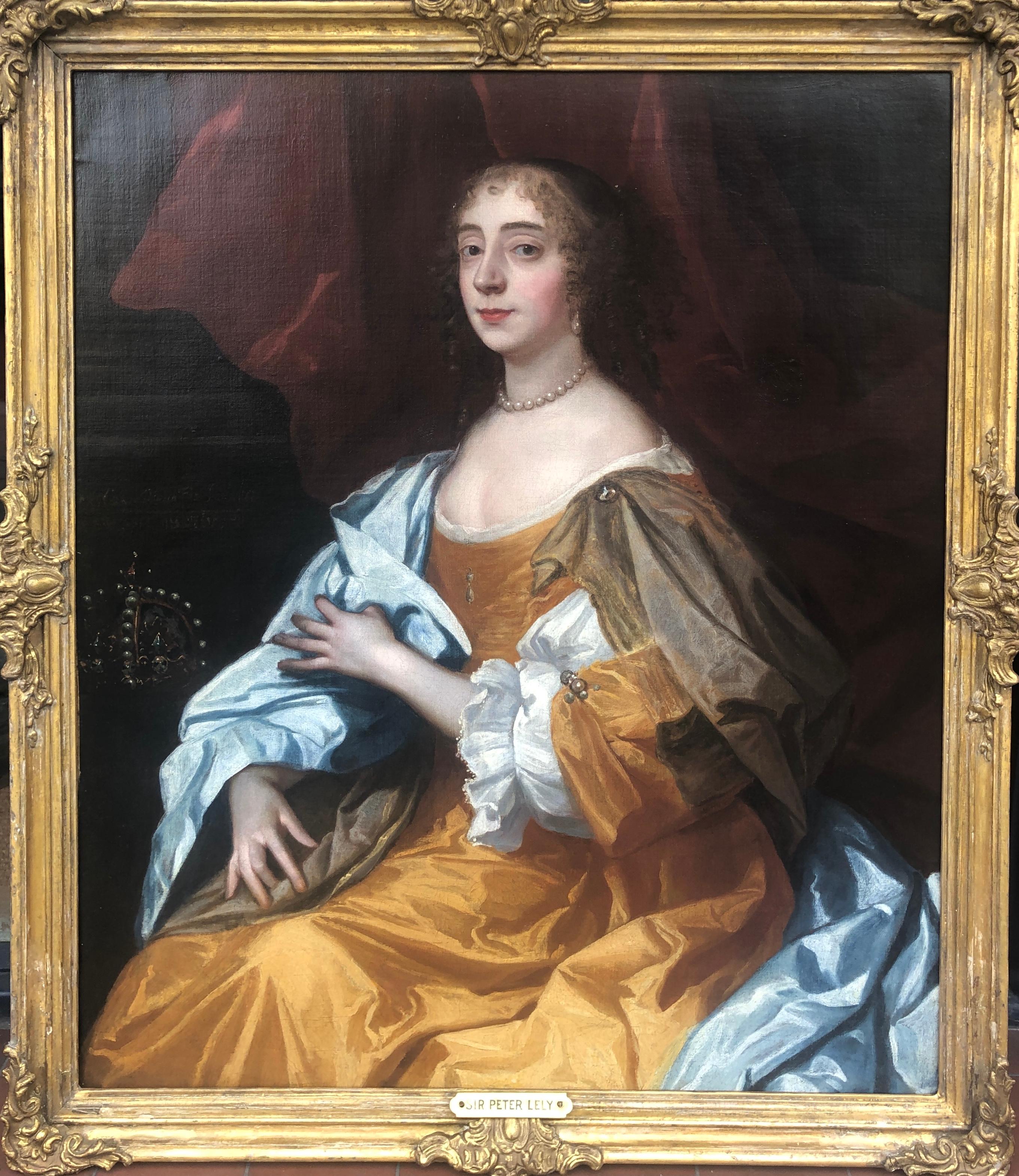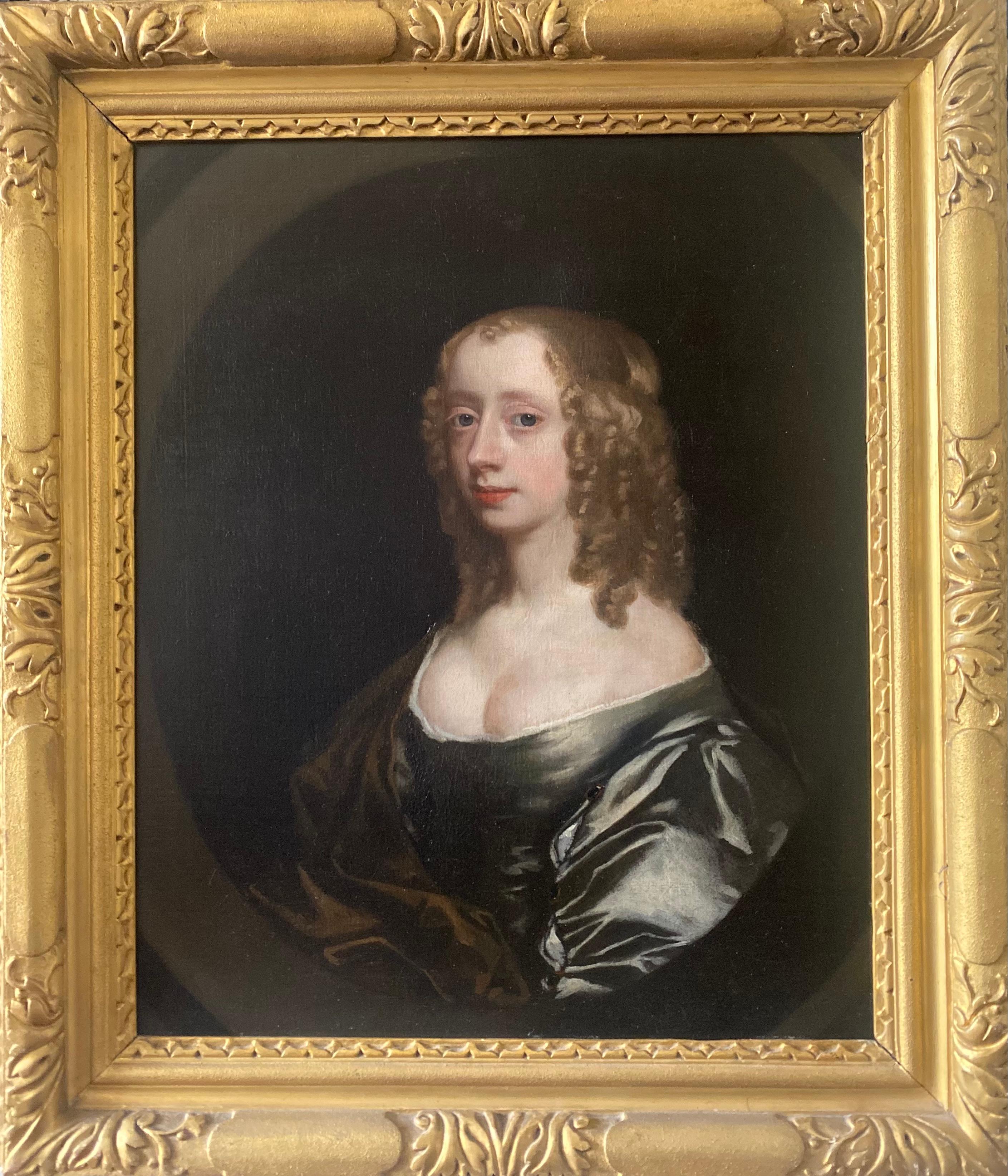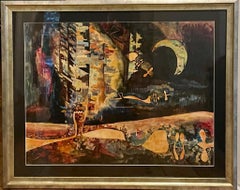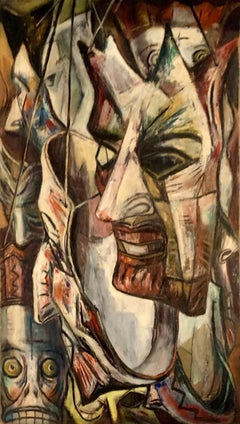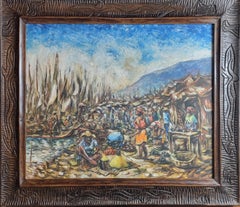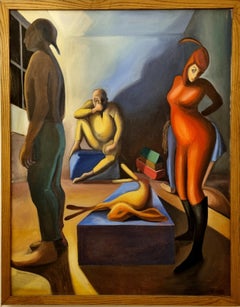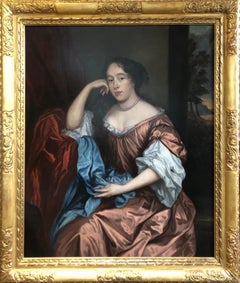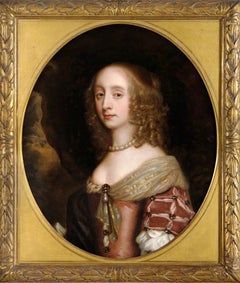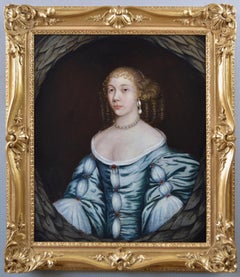Items Similar to 17th Century Oil Painting Portrait Of Catherine Of Braganza Circle of Peter Lely
Want more images or videos?
Request additional images or videos from the seller
1 of 10
Unknown17th Century Oil Painting Portrait Of Catherine Of Braganza Circle of Peter LelyCirca 1660
Circa 1660
$19,936.08
£14,450
€17,046.36
CA$27,421.77
A$30,481
CHF 15,977.49
MX$372,246.81
NOK 199,469.73
SEK 187,663.80
DKK 127,229.09
About the Item
Catherine of Braganza (1638–1705), Circle of Sir Peter Lely (1618–1680)
Queen consort of England, Scotland, and Ireland, married to King Charles II from 1662 until his death in 1685.
This stunning 17th-century oil painting of Catherine of Braganza dates to approximately 1663–1668, reflecting her early reign. This beautifully executed work captures her elegance and regal presence. The portrait presents Catherine in a three-quarter-length pose, commanding attention with her graceful demeanour. She is adorned in a luxurious ermine fur-lined red velvet cloak, which adds a sense of opulence and warmth to the composition. In her hand, she holds a string of pearls, which are also sewn into her clothing and adorn her hair, symbolising her status and wealth. The rich, vibrant colours enhance the painting’s visual impact.
The large dimensions and ornately designed frame suggest it was an important commission intended for significant display, possibly in a state room or gallery.
Sir Peter Lely, a Dutch-born artist who dominated English court portraiture during the Restoration, is known for his idealised "Lely face," soft lighting, and luxurious details, all of which are evident in this portrait. The style aligns with his mid-1660s works. A signature is visible in the lower left of the painting, though it is difficult to decipher. The quality of the work suggests it was painted under the close supervision of Sir Peter Lely.
The lighting, luxurious details, and overall composition of this portrait align with Peter Lely’s works from the mid-1660s. This exceptional painting holds historical significance. Its size, exquisite details, and portrayal of Catherine make it highly desirable.
Catherine of Braganza, Queen consort of England, Scotland, and Ireland, was born on 25 November 1638 in Vila Viçosa, Portugal. She married King Charles II of England in 1662 as part of a political alliance. As queen consort, Catherine faced challenges and criticism due to her Catholic faith in a predominantly Protestant country. However, she played a significant role in the restoration of the monarchy in England and influenced the court culture of the time. Catherine is also known for her love of tea, which she introduced to the English court. She had an affinity for Portuguese customs and traditions, and her promotion of tea consumption eventually made it a national pastime.
This portrait is a genuine 17th-century work from the circle of Sir Peter Lely, offering a unique depiction of Catherine of Braganza. Its historical context and artistic quality make it a significant piece for collectors and historians interested in Restoration-era England. The idealised facial features, delicate hands, glossy pearls, and luxurious clothing are well-executed, meeting Sir Peter Lely’s high standards for royal portraiture. The composition suggests it was a significant commission.
The dimensions of the painting without the frame are 120.5 x 91.4 cm (47½ x 36 in); including the frame, 146.5 x 118 cm.
The painting is in good antique condition, ready for its new home. It shows signs of age and use, with minimal age-related wear to the frame, as expected.
- Creation Year:Circa 1660
- Dimensions:Height: 57.68 in (146.5 cm)Width: 46.46 in (118 cm)Depth: 3.94 in (10 cm)
- Medium:
- Movement & Style:
- Period:
- Condition:Good antique condition. There is minor age-related wear to the frame, as to be expected.
- Gallery Location:Hoddesdon, GB
- Reference Number:1stDibs: LU2723214307122
About the Seller
5.0
Vetted Professional Seller
Every seller passes strict standards for authenticity and reliability
1stDibs seller since 2024
6 sales on 1stDibs
- ShippingRetrieving quote...Shipping from: Hoddesdon, United Kingdom
- Return Policy
Authenticity Guarantee
In the unlikely event there’s an issue with an item’s authenticity, contact us within 1 year for a full refund. DetailsMoney-Back Guarantee
If your item is not as described, is damaged in transit, or does not arrive, contact us within 7 days for a full refund. Details24-Hour Cancellation
You have a 24-hour grace period in which to reconsider your purchase, with no questions asked.Vetted Professional Sellers
Our world-class sellers must adhere to strict standards for service and quality, maintaining the integrity of our listings.Price-Match Guarantee
If you find that a seller listed the same item for a lower price elsewhere, we’ll match it.Trusted Global Delivery
Our best-in-class carrier network provides specialized shipping options worldwide, including custom delivery.More From This Seller
View AllSurrealist Oil Painting By Fernand Carette, 20th Century
Located in Hoddesdon, GB
Fernand Carette 1921- 2005 Futuristic surrealist landscape . oil painting by Belgian artist Carette painted during the 1960s while he was working with the Phases group . 64cm x 49cm ...
Category
1960s Surrealist Abstract Paintings
Materials
Oil
Art Deco Abstract Oil Painting by Burr Singer , 20th Century
By Burr Singer
Located in Hoddesdon, GB
A beautifully painted Art Deco period oil painting by highly acclaimed American Artist Burr Singer 1912-1992 . Oil on canvas dating to the 1930s . Very good condition.
Dimensions...
Category
1930s Abstract Abstract Paintings
Materials
Canvas, Oil
Ernst Louizor ( 1938-2011 ) oil painting on board
By Ernst Louizor
Located in Hoddesdon, GB
Ernst Louizor (1938-2011) a beautiful oil painting on board. This vibrant artwork depicts a bustling village scene, elegantly mounted in its original carved wooden frame from Haiti. ...
Category
Mid-20th Century Impressionist Figurative Paintings
Materials
Oil, Board
20th Century Surrealist Oil Painting on Canvas
Located in Hoddesdon, GB
20th century modernist oil painting on canvas . Signed with artists monogram and Dated 1991.
This large and impressive painting evokes a range of emotions and interpretations. With...
Category
1990s Surrealist Figurative Paintings
Materials
Oil
20th Century Impressionist Painting by Emil John Hess Circa 1940
Located in Hoddesdon, GB
Emil John HESS 1913-2003
This vibrant watercolor on canvas by acclaimed American artist Emil John Hess immerses viewers in the lively atmosphere of a bustling circus scene. Painted...
Category
1940s Impressionist Abstract Paintings
Materials
Canvas, Watercolor
English Caricature Watercolour Painting, Victorian, 1902
Located in Hoddesdon, GB
An English Caricature Watercolour painting signed with the artists monogram & dated 1902 .
A beautiful painting of a tamp playing a trumpet on a winters day , outside a house that is for sale or to let .
( It makes me wonder if the tramp portrayed in the painting was once the owner of the property but has fallen on hard times...
Category
Early 1900s Victorian Figurative Paintings
Materials
Watercolor
You May Also Like
Portrait of a Lady, After Sir Peter Lely (1610-1680) Oil Painting
By After Sir Peter Lely
Located in Uppingham, GB
Oil Painting After Sir Peter Lely (1610-1680) Portrait of a Lady
Housed in a Lely gold Leaf Frame.
Peter Lely:
In 1647 he became a member of the Pain...
Category
17th Century Old Masters Portrait Paintings
Materials
Oil
17th Century portrait oil painting of a lady
Located in Nr Broadway, Worcestershire
Circle of Sir Peter Lely
Dutch, (1618-1680)
Portrait of a Lady, traditionally identified as Princess Henrietta Anne Stuart
Oil on canvas
Image...
Category
17th Century Portrait Paintings
Materials
Canvas, Oil
17th century English portrait of a lady
By Sir Peter Lely
Located in Bath, Somerset
Miss Ada Gossett, circa 1673, half-length in a landscape at dusk, wearing an amber silk gown adorned with a gold trimmed gauze shawl and fine jewels, wearing a pearl necklace, her fa...
Category
17th Century Old Masters Portrait Paintings
Materials
Canvas, Oil
17th Century portrait oil painting of a lady
By Studio of Sir Peter Lely
Located in Nr Broadway, Worcestershire
Studio of Sir Peter Lely
Dutch, (1618-1680)
Portrait of a Lady
Oil on canvas
Image size: 29.25 inches x 24.25 inches
Size including frame: 37...
Category
17th Century Portrait Paintings
Materials
Canvas, Oil
Portrait of Bridget Drury Lady Shaw, formerly Viscountess Kilmorey
By Sir Peter Lely
Located in London, GB
Sir Peter Lely (Soest 1618 – 1680 London)
Portrait of lady with a crown, possibly Bridget Drury Lady Shaw, formerly Viscountess Kilmorey, later Lady Baber (d.1696) c.1665
Oil on canvas
46 1/2 x 40 3/4 inches, Framed
42 1/4 x 36 1/4 inches, Unframed
Inscribed left [……….]Isabella
James Mulraine wrote the following for this piece:
This portrait dates to the middle of the 1660s, the decade when Lely’s career took off as successor to Sir Anthony van Dyck. At the Restoration Charles II had appointed him Principal Painter to the King and paid a pension £200 per annum ‘as formerly to Sr. Vandyke...’1 Lely had trained in Haarlem and he was in his early twenties when he came to London in 1643. He was an astute businessman and a wise courtier. In 1650 he painted a portrait of Oliver Cromwell (Birmingham Museum and Art Gallery) while maintaining links with the Royalist exiles through the 1650s. He had arrived in England as a painter of small-scale portraits and lush scenes of nymphs in landscapes in a Dutch style. His experience of Van Dyck in English collections transformed his painting. His lavish and alluring vision of Arcadia exactly captured the spirit of the Court and as Principal Painter he dominated English portraiture for the next twenty years. Lely ran a highly efficient studio along Netherlandish lines, employing a team of specialists like the drapery painter John Baptist Gaspars and young artists-in-training like Nicolas de Largilliere. He had numerous rivals during that period, and by 1670 he had introduced numbered standard poses to speed up production, while collaborating with printmakers for further revenue and advertising. He died in 1680 of a stroke while painting, working to the last.
The portrait, painted at a date when Lely’s poses and execution were still individual and inventive shows a lady sitting at three-quarter length facing away from the viewer. She has begun to turn towards the viewer, a pose with a long pedigree in art, first used by Leonardo da Vinci in the Mona Lisa (Louvre). She steadies her blue drapery where it might slip from her arm with the movement, a flash of realism beautifully captured. Like Van Dyck, Lely painted his female sitters in a timeless costume rather than contemporary fashion, showing a loose gown and floating silk draperies. It presented the sitter as a classical ideal. The portrait would not date.
The saffron dress may be the work of a drapery painter but the brown scarf must be by Lely himself, and appears unfinished, broadly sketched in behind the shoulder. The delicate blue glaze and nervous highlights suggest shimmering translucence. Lely was a master of painting hands – his hand studies are marvels of drawing – and the lady’s hands are superb, exactly drawn, delicately modelled and expressive. The fidgety gestures, clutching the gown, fiddling with the edge of the scarf, give the portrait psychological bite, suggesting the personality behind the calm courtier’s expression, adding to the sense shown in the look of the eyes and mouth that the lady is about to speak. The portrait’s language is Vandykian. The inspiration comes directly from Van Dyck’s English portraits of women. Lely owned Van Dyck’s Portrait of Lady Elizabeth Thimbleby and Dorothy Viscountess Andover (National Gallery, London) and the sitter’s costume quotes Lady Andover’s saffron dress and brown scarf. But Lely paints a generation who sat nearer to the ground and through a dialogue of expression and gesture he shows sitters who are more flesh and blood than Van Dyck’s.
The background with a column and curtain is different to those shown in most of Lely’s portraits of women. They tend to include trees or fountains, with a glimpse of landscape. But there are other examples. A portrait of the King’s reigning mistress, Barbara Villiers Duchess of Cleveland...
Category
1660s Portrait Paintings
Materials
Oil
$71,742 Sale Price
20% Off
Free Shipping
English 17th century portrait of a lady
By Sir Peter Lely
Located in Bath, Somerset
A 17th century English portrait of a lady by Sir Peter Lely (1618-1680), half-length in a painted feigned oval, wearing a green silk gown with chestnut coloured cloak over one shoulder, her fair hair curled in the fashionable ringlet style of the period. Oil on canvas in an English giltwood 'Lely' frame.
We are grateful to Diana Dethloff and Catharine MacLeod (who are currently working on a Lely catalogue raisonné) for their confirmation of Lely as the artist from photograph analysis of this previously unidentified early work.
Provenance:
Private collection Nottingham until 2021
Mellors and Kirk sale December 2000, lot 1173
The sitter is likely to have been from an upper class or aristocratic family in court circles, who were the main source of Lely`s patronage. The simple composition serves to highlight the beauty of the sitter through portraying her pale decolletage and complexion, set against the gentle gaze of her blue eyes, the soft blush of her cheeks and her full red lips.
Peter Lely (1618-1680) was originally of dutch origin and became Principle Painter to the King in 1661, following in the footsteps of Van Dyck who had died in 1641. He dominated the portrait painting scene in England for over 20 years, creating a distinctive 'court look' in his work which had a strong influence on many other artists. He had an extremely successful and popular portrait practice which meant that he soon had to develop production methods that could accommodate the high demand for portraits, and also for copies and versions of them which were given as gifts to family and courtiers. The use of studio assistants was a common practice for busy artists and as with Van Dyck, Lely is known to have used specialist assistants to execute particular parts of his paintings. Artists who worked in Lely`s studio included John Baptist Gaspars who specialised in drapery painting, William Wissing, John Greenhill...
Category
17th Century Baroque Portrait Paintings
Materials
Canvas, Oil
$24,282 Sale Price
20% Off
More Ways To Browse
Catholic Painting
Portrait Portugal
Tea Time Painting
Antique Catholic Art
Mid Century String Art
17th Century Pearl
Antique Catholic Painting
Antique Black Velvet Paintings
Scottish Pearl
Sir Peter Lely
Portuguese Antique Lighting
Antique Scottish Pearls
Velvet Cloak
Catherine Of Braganza
19th Century Male Portrait French
James Coates Fine Art
George Vertue
William Henry Earl
